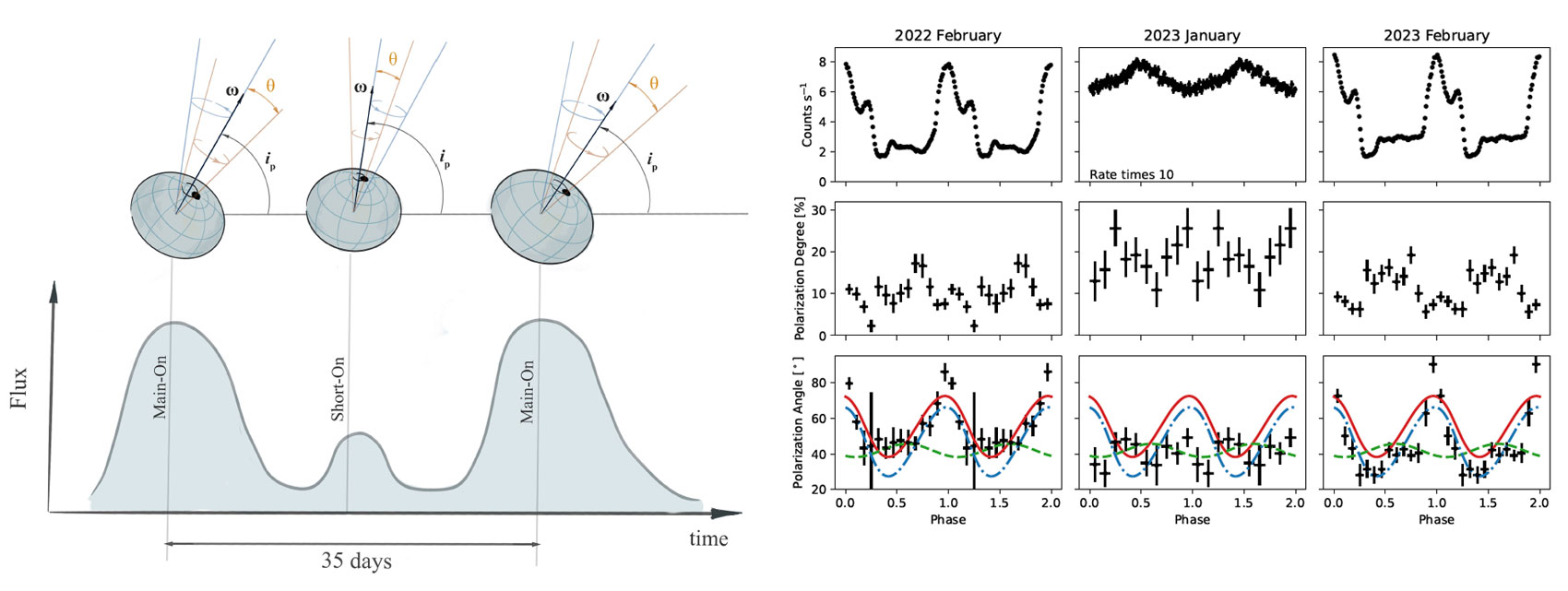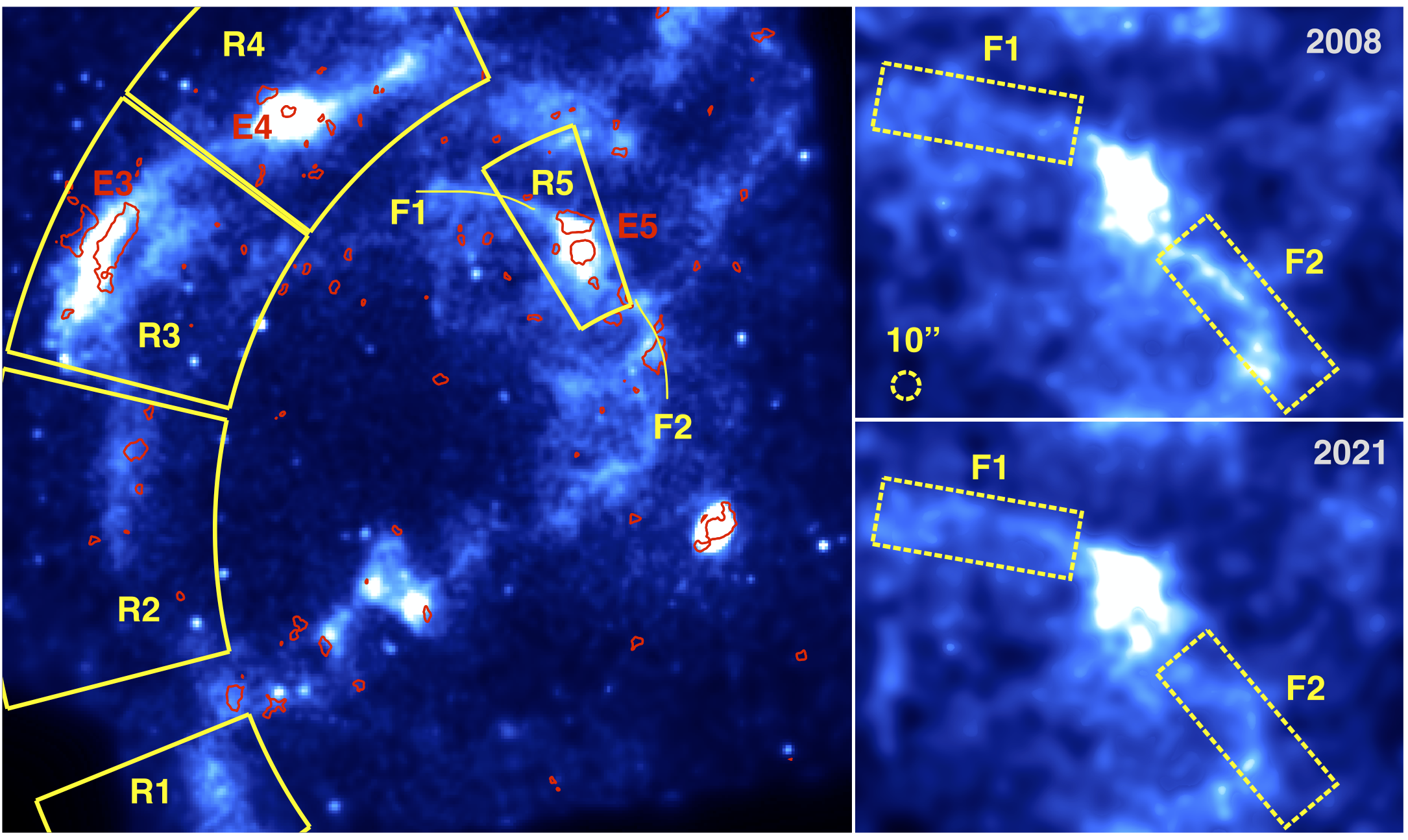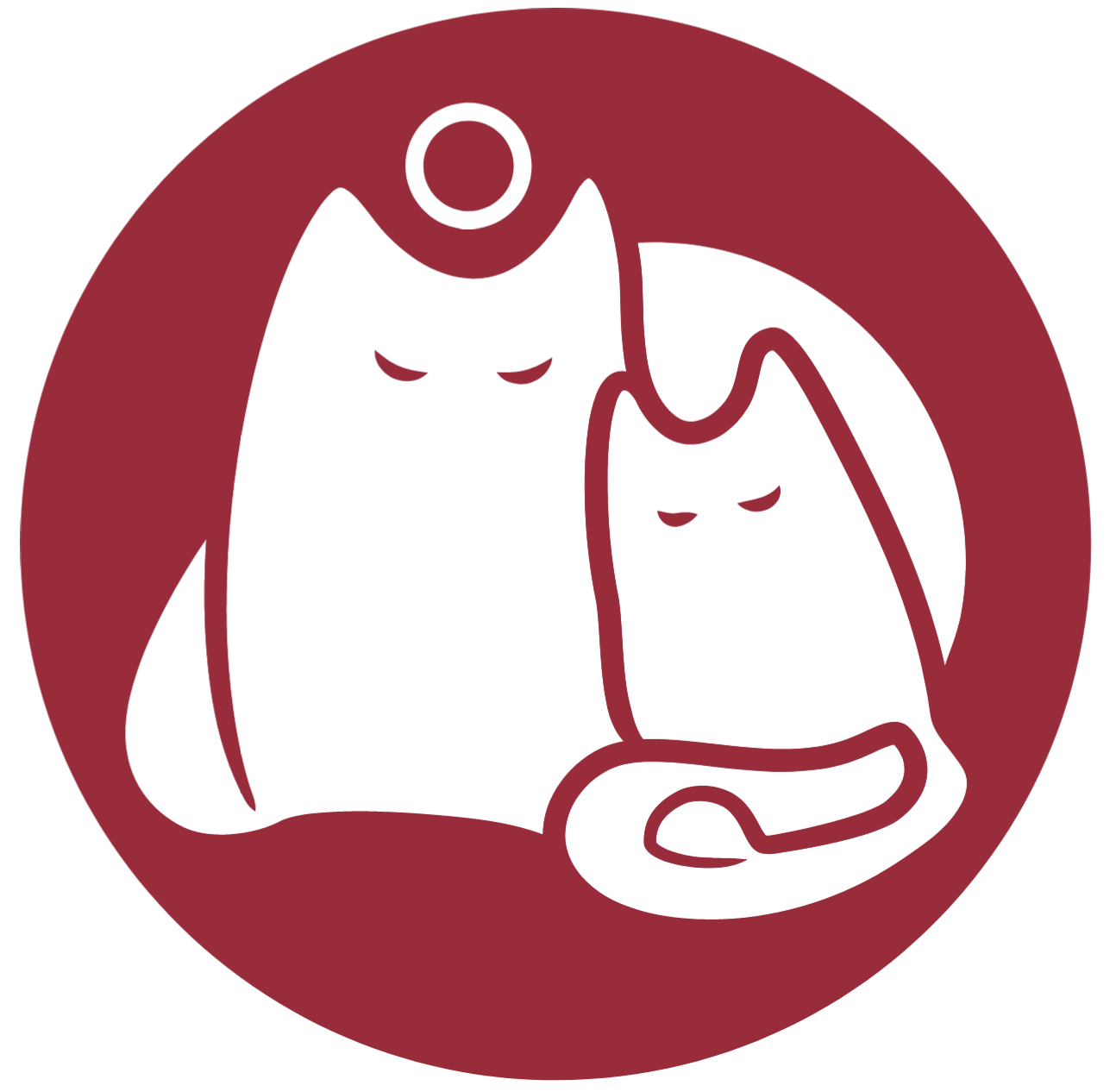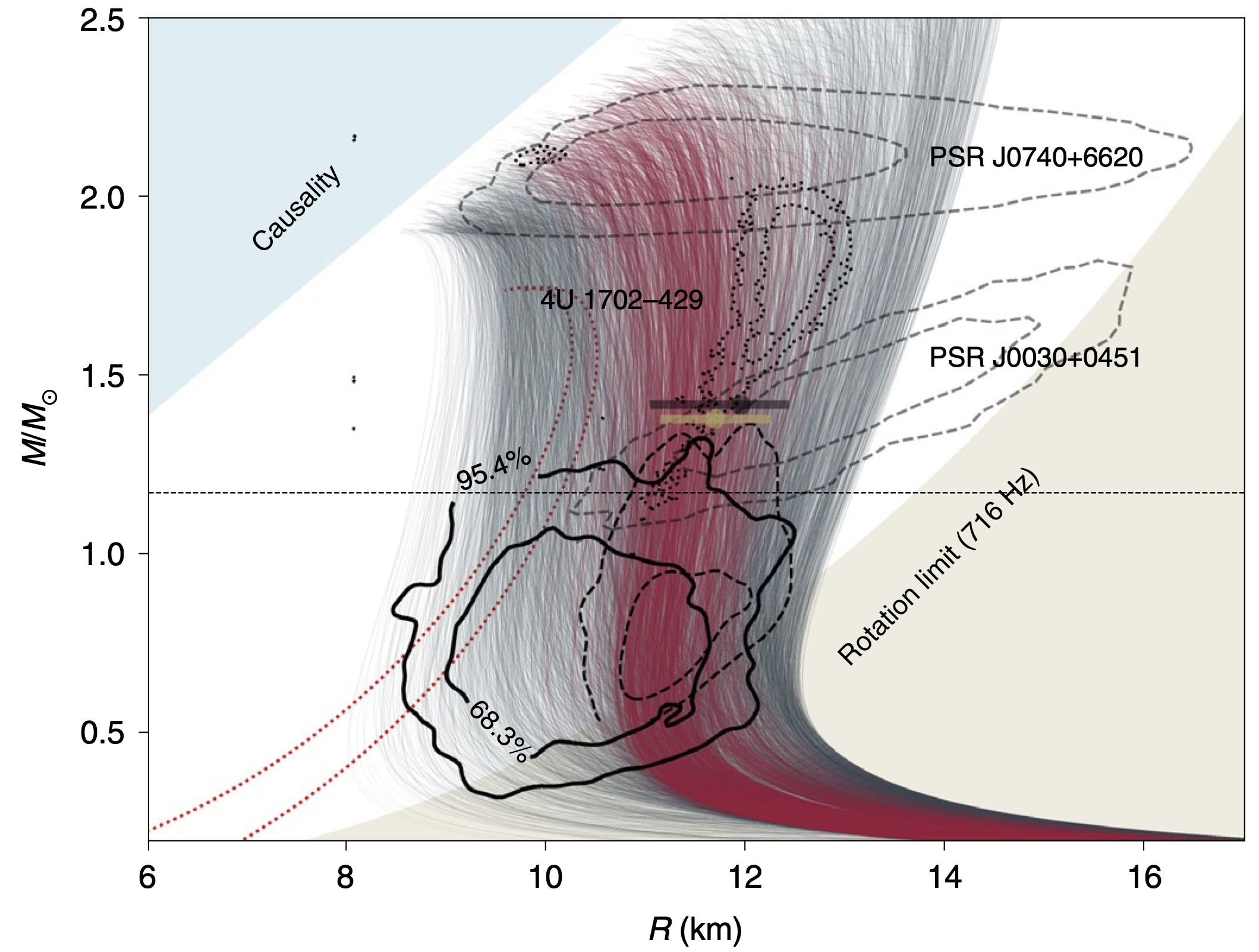Mar 05, 2024
I've always wanted to publish a single-author paper, just to mark an imagionable checkbox somewhere.
So now it's at least submitted. The draft accompains the actually useful part of this work, i.e. the tool itself
now (and hopefully forever) accessible on our institute's web page:

Dec 02, 2023
Well, my spirit is honestly even lower than usual at the end of a year (very
productive and successfull scientifically!) for a number of reasons.
But, SpIRIT, a path-finder for HERMES Gamma-ray burst detection constellation with heavy involvement of IAAT
has been launched launched aboard SpaceX Falcon 9 rocket yesterday!
Congratulations to the collegues - flying Tübingen hardware in space is always exciting!

Nov 07, 2023
A follow-up of our first IXPE paper on Her
X-1, a beatiful
analysis mostly done by Jeremy Heyl, but
also with yours truly participation. With more IXPE data and more careful
analysis, we show that there's direct evidence that the 35-day-period is set by
the free precession of the neutron star crust, which has the important
implication that its crust is somewhat asymmetric fractionally by a few parts
per ten million. Furthermore, we find indications that the basic spin geometry
of the neutron star is altered by torques on timescale of a few hundred days.

Sep 26, 2023
With the help of two Chandra observations separated by 13 years, we were able to measure the expansion rate and rapid variability of brightness of
individual X-ray filaments in a VERY peculiar supernova remnant (SNR) HESS J1731-347. That's the same one which hosts a strange star candidate we found earlier.
Measuring expansion rate implies that we can measure expansion velocity and age of the remnant and compact object at the centre and may have important implications for our understanding of
neutron/strange star cooling. On the other hand, observed rapid variability implies that the magnetic field around the filaments is very strong and must be able to contain not only electrons but also
heavier particles during acceleration. Potentially up to PeV energies! The results have been published in A&A.

Jul 03, 2023
We've just published the best quality IXPE
data and most sophisticated phase-resolved analysis of an X-ray pulsar to date!
With some luck with outburst timing we were able to catch this transient at two
different luminosities, and, surprisingly, not only the pulse profiles (which
is quite common for Be-transients) have changed, but also polarization properties turned out to be completely different in two observations!

Our first reaction was that something VERY strange is going on, i.e. crazy
precession of the neutron star, or glitch, or something even more unexpected...
However, careful analysis confirmed that phase of the pulsar does not change
and there is apparently noting unusual going on with pulse profiles. On the
other hand, the observed changes in polarization angle can be explained if
there is additional polarized component in the observed emission. We attributed
it to scattering in strong winds/outflows which have been known to be present
in luminous XRPs since a while and is apparently present in first observation
of RX J0440.9+4431. This allowed not only to describe what we see in IXPE data,
but also to obtain very tight constrains on geometry of the pulsar AND binary
system. The fact that in second observation the observed PA dependence matches
predictions of rotating vector model so perfectly also strongly suggests that
QED effects suggested to define polarization in all magnetic rotators observed to date (pulsars, magnetars) are, in fact, real!
Mar 28, 2023
A huge work by my PhD students Arthur Avakyan and Marvin Neumann
finally materialized as most detailed and up-to-date catalogus of low-mass (LMXBCat) and high-mass (HMXBCat) X-ray binaries.
The full versions of catalogs can be found at XRBCats project web-page which has a very cute logo in my opinion :)

Nov 03, 2022
And another IXPE paper. We report observation of the closest and X-ray brightest Compton-thick active galactic nucleus (AGN), the Circinus galaxy. This time significant polarization is detected at a level of ~30 per cent (at 68 per cent confidence level) for the neutral reflector, with a polarization angle of 18 deg, roughly perpendicular to the radio jet. A comparison with Monte Carlo simulations of the polarization expected from the torus shows that the neutral reflector is consistent with being an equatorial torus with a half-opening angle of 45°-55°. This is the first X-ray polarization detection in a Seyfert galaxy, demonstrating the power of X-ray polarimetry in probing the geometry of the circumnuclear regions of AGNs, and confirming the basic predictions of standard Unification Models.
Oct 18, 2022
Valery Suleimanov has finally pushed a very important theoretical paper required for proper modeling of any emission from X-ray pulsars. All relevant physical processes one could include are included and calculated opacities are made available in tabular form for everyone who wants dive into sea of complex radiatively-dominated physics within X-ray pulsars emission regions!
Sep 15, 2022
Another exciting result from IXPE! A pretty large polarization from Mrk~421 (factor of three larger than in other bands) was surprisingly detected
 This, and lack of polarization variability, basically means that observed X-rays come from shocks near the very engine of the Blazar whereas emission in other bands comes from further away! A solid result showcasing the power of X-ray polarimetry. Congratulations to Laura Di Gesu, the first author of the paper by IXPE collaboration.
This, and lack of polarization variability, basically means that observed X-rays come from shocks near the very engine of the Blazar whereas emission in other bands comes from further away! A solid result showcasing the power of X-ray polarimetry. Congratulations to Laura Di Gesu, the first author of the paper by IXPE collaboration.
Sep 01, 2022
And another Nature astronomy paper, this time without
a large collaboration. In fact, it comes in the same volume as the Her X-1
paper, which might be the first case when someone published two first author
papers in the single volume of Nature astronomy :) The essense of the paper is
summarized by the title and figure below
 We have basically re-visited the old friend, the CCO in HESS J1731-347 in order to use all available constraints on spectrum and distance to the source and improve estimates of mass and radius of the neutron star. Which turned out to be, well... strangely light! It might be the lightest neutron star known, in fact. Or even some more exotic object! The paper attracted quite a bit of press-coverage including press release by the Univeristy, getting me some interviews/outreach (New scientist, Sky&Telescope,phys.org and more) and ranking high in Altmetric:
We have basically re-visited the old friend, the CCO in HESS J1731-347 in order to use all available constraints on spectrum and distance to the source and improve estimates of mass and radius of the neutron star. Which turned out to be, well... strangely light! It might be the lightest neutron star known, in fact. Or even some more exotic object! The paper attracted quite a bit of press-coverage including press release by the Univeristy, getting me some interviews/outreach (New scientist, Sky&Telescope,phys.org and more) and ranking high in Altmetric:
Sep 01, 2022
And now my share of the X-ray polarization pie. A very important source for me (did my Bachelor on it!) and for the IAAT: Her X-1.
In the latest Nature Astronomy paper we use phase-resolved X-ray polarimetry to constrain the geometry of the pulsar.

We also add old optical polarimetry to the mix to show that the spin axis of the neutron star is misaligned with its orbital axis - a condition required to allow its free precession (suggested previously to explain observed changes of the pulse profile shape over the 35d super-orbital variability cycles).
More observations are coming next year, and of course more observations of X-ray pulsars by IXPE too! The paper attracted quite a bit of attention, so we also have a press-release from the University and NASA
Aug 29, 2022
Another paper on observations of 1A~0535+262 with Insight-HXMT in 2020. This time we looked at evolution of the pulse profiles:
 The observed changes indeed seem to confirm our previous spectra-based suggestion that the source did transition to super-critical state in this outburst!
The observed changes indeed seem to confirm our previous spectra-based suggestion that the source did transition to super-critical state in this outburst!
Aug 22, 2022
And now the first Imaging polarimetry result from IXPE!
Jakko Vink has just published an ApJ paper describing first infant steps towards the true spatially-resolved analysis of supernova remnants.
 We're still talking about two sigma detection in individual pixels, but overall significance is of course much higher. And that's the first time X-ray polarimetry was used to probe magnetic field structure in an SNR!
Observed polarization appears to be in line with what radio (still bringing some new insights), which is also a good thing!
We're still talking about two sigma detection in individual pixels, but overall significance is of course much higher. And that's the first time X-ray polarimetry was used to probe magnetic field structure in an SNR!
Observed polarization appears to be in line with what radio (still bringing some new insights), which is also a good thing!
Aug 03, 2022
Juhani Mönkkönen has finally managed to wrap-up and push his main PhD paper through all the hurdles of complex data analysis and refereeing process.
I were lucky to be with Sergey Tsygankov at the beginning of the project which we initially wanted to do ourselves, but failed miserably :) So, the more important is the conclusion, congratulations! The basic idea of the paper is that properties of the aperiodic variability appear to be similar and (unsurprisingly) driven by same physics in many kinds of compact objects, and can be used to probe interaction of the magnetosphere with accretion flow.
 In particular, Juhani used the observed power spectra of Her~X-1 to argue for presence of strong multipole field components in the source.
In particular, Juhani used the observed power spectra of Her~X-1 to argue for presence of strong multipole field components in the source.
Jul 19, 2022
And another IXPE paper!
This time on Seyfert galaxy MCG-05-23-16. We report on the first observation of a radio-quiet Active Galactic Nucleus (AGN) using polarized X-rays. Half a megasecond of IXPE time plus some XMM and NuSTAR. Only an upper limit on the polarization, but that's valuable as low polarization might indicate a lamp-post and a conical geometry of the corona (and if it's a slab, then some rather strict constrains on inclination must be satisfied). Stay tuned for more IXPE papers!
Jul 14, 2022
So, it's official - IXPE opened a new observational window in form of X-ray polarimetry and started to pump-out results!
Well, in this particular case the main result is not detection, but that's just a beginning!
Jun 12, 2022
The Swift J0243.6+6124 is one of my favorite sources, linking normal pulsars with PULXs and one where we found solid evidence for presence of radiatively-pressure-dominated accretion disk normally reserved for BH systems. Now with the help of Insight-HXMT it was possible to detect also the highest-energy-to-date cyclotron line in spectrunm of the source!
 The results are reported in Chinese-led paper where we also discuss implications of the discovery. Basically, it does not simply imply that the field is strong, it also means that the field is strongly non-dipolar!
The results are reported in Chinese-led paper where we also discuss implications of the discovery. Basically, it does not simply imply that the field is strong, it also means that the field is strongly non-dipolar!
May 11, 2022
Sometimes Nature just throws it to your face! When the event was detected by eRosita near time analysis team, everyone was rather surprised by the mere appearance of it. It did not take long to associate what we saw with the flurry of ATELs reporting the flash of YZ Reticuli. Which was big, because it was clear that we observed the ignition flash of a novae, something which was (unsuccessfully) searched for more than thirty years! Which made the work to make it to the nature cover!

A very lucky coincidence taking into the account the comparatively narrow field of view of eRosita and the fact that the flash is such a short event (hours). Indeed, evein if eRosita is an all sky survey, instantaneous field of view is just shy of two moons in diameter, and given point on the sky is scanned only twice a year, but this time it was in the right place at the right time!
Of course, detection was just a beginning of the very complex work led by Ole König from FAU, which allowed us not only to recover the time and place of event, but also the decently constraining X-ray spectrum from the extremely piled-up data. The phenomenon of "pile-up" occurs in X-ray CCD detectors when the source is too bright and more than one photon hits given pixel between the readout cycles, so while we still know the total energy received, we loose track of the number of photons carrying it and thus can not recover their energy distribution. The only thing is - we now can! Ole modeled the response of the instrument to extremely bright source taking this effect into the account, which allowed to recover the true spectrum of the source, and measure its temperature (327000K), luminosity (52000 times the Sun!) and radius of 50000 km for the white dwarf.
This implies that eRosita has indeed detected the "naked" photosphere just after the released energy reached its surface and before the main expansion of the envelope, i.e. a Nova in fireball phase. The results are published in Nature today. The full press releases from Uni Tübingen and FAU, as well as journalist's take on the paper from Sky&Telescope and inverse.com are also in place :)
May 02, 2022
Alexander Musthukov and Sergey Tsygankov just posted a nice review on X-ray pulsars on arxiv
which is going to become a part of the upcoming Handbook of X-ray and Gamma astronomy by Springer I am currently editing. Feel free to recommend to your students!
Apr 24, 2022
In 2020 1A~0535+262 surprised us with a quite spectacular outburst, which allowed to exploit Insight-HXMTto it's fullest and part of the results appear now in our paper led by collegues from IHEP. We focus on the two-dimensional dependence of the cyclotron resonance scattering features (CRSFs) along the outburst time and at different phases. The basic result seen also in figure below is that CRSF fundamental shows different time- and phase-dependent behaviors compared to harmonic.
 Based on these results, we speculate that when the source enters the supercritical regime, the higher accretion column can significantly enhance the harmonic line at a narrow phase through an "anti-pencil" beam at a higher energy band. At the same time, it will also affect the behavior of the fundamental line.
Based on these results, we speculate that when the source enters the supercritical regime, the higher accretion column can significantly enhance the harmonic line at a narrow phase through an "anti-pencil" beam at a higher energy band. At the same time, it will also affect the behavior of the fundamental line.






 This, and lack of polarization variability, basically means that observed X-rays come from shocks near the very engine of the Blazar whereas emission in other bands comes from further away! A solid result showcasing the power of X-ray polarimetry. Congratulations to Laura Di Gesu, the first author of the
This, and lack of polarization variability, basically means that observed X-rays come from shocks near the very engine of the Blazar whereas emission in other bands comes from further away! A solid result showcasing the power of X-ray polarimetry. Congratulations to Laura Di Gesu, the first author of the  We have basically re-visited the old friend, the CCO in HESS J1731-347 in order to use all available constraints on spectrum and distance to the source and improve estimates of mass and radius of the neutron star. Which turned out to be, well... strangely light! It might be the lightest neutron star known, in fact. Or even some more exotic object! The paper attracted quite a bit of press-coverage including press release by the
We have basically re-visited the old friend, the CCO in HESS J1731-347 in order to use all available constraints on spectrum and distance to the source and improve estimates of mass and radius of the neutron star. Which turned out to be, well... strangely light! It might be the lightest neutron star known, in fact. Or even some more exotic object! The paper attracted quite a bit of press-coverage including press release by the 
 The observed changes indeed seem to confirm our previous spectra-based suggestion that the source did transition to super-critical state in this outburst!
The observed changes indeed seem to confirm our previous spectra-based suggestion that the source did transition to super-critical state in this outburst! We're still talking about two sigma detection in individual pixels, but overall significance is of course much higher. And that's the first time X-ray polarimetry was used to probe magnetic field structure in an SNR!
Observed polarization appears to be in line with what radio (still bringing some new insights), which is also a good thing!
We're still talking about two sigma detection in individual pixels, but overall significance is of course much higher. And that's the first time X-ray polarimetry was used to probe magnetic field structure in an SNR!
Observed polarization appears to be in line with what radio (still bringing some new insights), which is also a good thing! In particular, Juhani used the observed power spectra of Her~X-1 to argue for presence of strong multipole field components in the source.
In particular, Juhani used the observed power spectra of Her~X-1 to argue for presence of strong multipole field components in the source. The results are reported in Chinese-led
The results are reported in Chinese-led 
 Based on these results, we speculate that when the source enters the supercritical regime, the higher accretion column can significantly enhance the harmonic line at a narrow phase through an "anti-pencil" beam at a higher energy band. At the same time, it will also affect the behavior of the fundamental line.
Based on these results, we speculate that when the source enters the supercritical regime, the higher accretion column can significantly enhance the harmonic line at a narrow phase through an "anti-pencil" beam at a higher energy band. At the same time, it will also affect the behavior of the fundamental line.